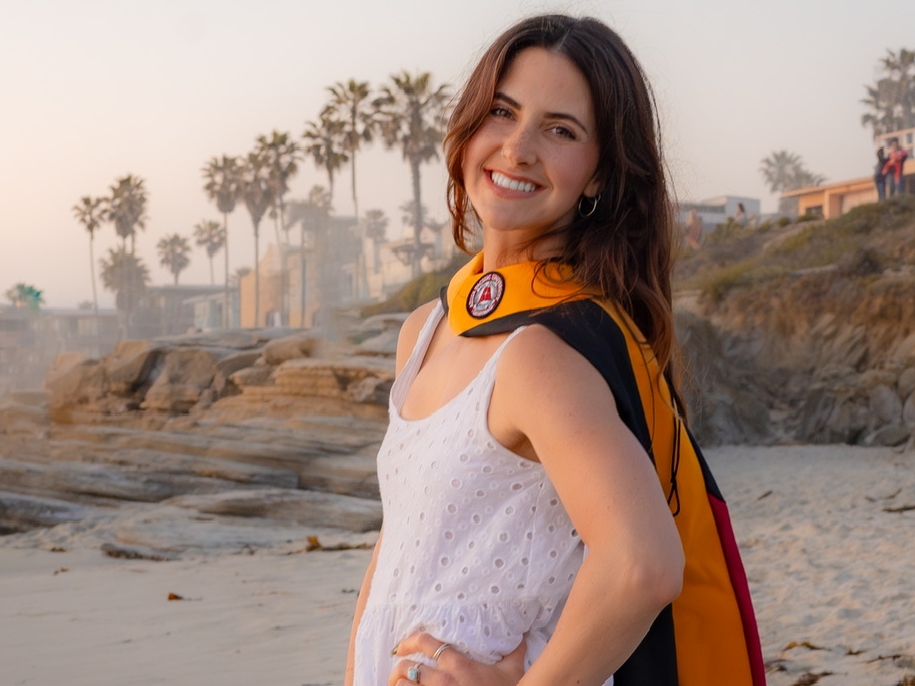- Home
- >
- APU Articles
- >
- News Article
Meghan Matas ’25 Interns at the University of California San Diego Burn Unit
July 14, 2025 | Category Health Sciences | Written By Jacqueline Guerrero

Azusa Pacific University prepares students to be difference makers wherever they end up after graduation. Meghan Matas ’25, graduated from the Master of Science in Child Life program in May. To become a certified child life specialist, students must complete 600 internship hours. Matas is getting a head start on her hours in order to earn her certification as soon as possible by interning at the University of California San Diego’s (UCSD) burn unit.
The UCSD burn unit is the only one in San Diego, so it sees many patients of all ages everyday. While Matas mainly works with pediatric patients, she is also gaining valuable experience working with adults as well. Each shift is different, but some of her tasks include normalizing children’s hospital sessions through therapeutic play and playroom sessions, teaching kids about their injuries and treatment, decreasing anxiety surrounding surgery and anesthesia, providing support during procedure dressing changes, and giving support and encouragement to older patients during their stay.
While most child life internships are centered on student shadowing, Matas is on a team of three other women who give her the freedom to complete tasks and work with patients on her own. APU’s child life program is seen as niche because it’s geared towards a very specific career path, but the intentionally curated curriculum has contributed to Matas’ successful freedom at UCSD. “It’s challenging to be thrown into a new job, but it’s been helpful to learn as I go. They trust me to see patients, do my own chart notes, and essentially be a full time employee.” On clinic days, Matas works with children ranging from 10-months-old to 16-years-old. “I implement what I’ve learned in my classes about child development to working with children,” she said. “Having an understanding of development has helped me realize that kids need different things at different ages. Younger children might need a distraction while older kids want to learn and be informed on what’s going to happen during their treatment.”
Having a background of Christian faith has also helped Matas connect with her patients. “When families are open about their faith, I feel comfortable utilizing that to help comfort them,” she said. “I had a 17-year-old patient that I did a therapeutic art activity with. She wanted to paint something to help relieve her anxiety about surgery, and she wrote ‘God is good’ on her piece.” After talking to the teenager, Matas learned that she was a Christian, and that leaning on her faith was very important to her during her time in the hospital. Before the girl’s surgery, Matas accompanied the patient and her family to the pre-operations area and asked if they would like to take a minute to pray together, which they were grateful for.
Being in the child life program has been educational academically, but the faculty have also taken care to help their students grow personally. “Every professor I’ve had has emphasized self care,” Matas said. “I didn’t fully understand how working in a hospital full time with patients who have severe injuries can be so emotionally draining. I’ve been keeping what my professors have said about self care in mind.” Learning to balance helping others and taking care of herself, Matas has realized that working with children is definitely her calling. Her goal is to find a child life specialist job in San Diego.